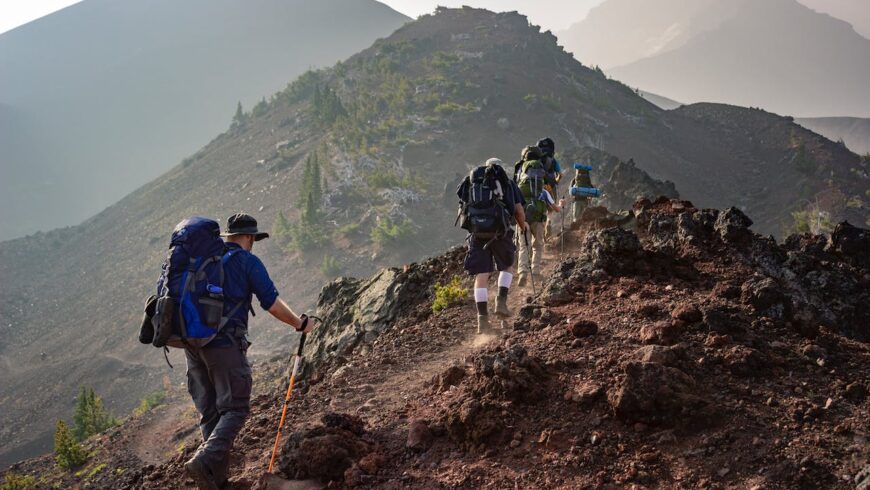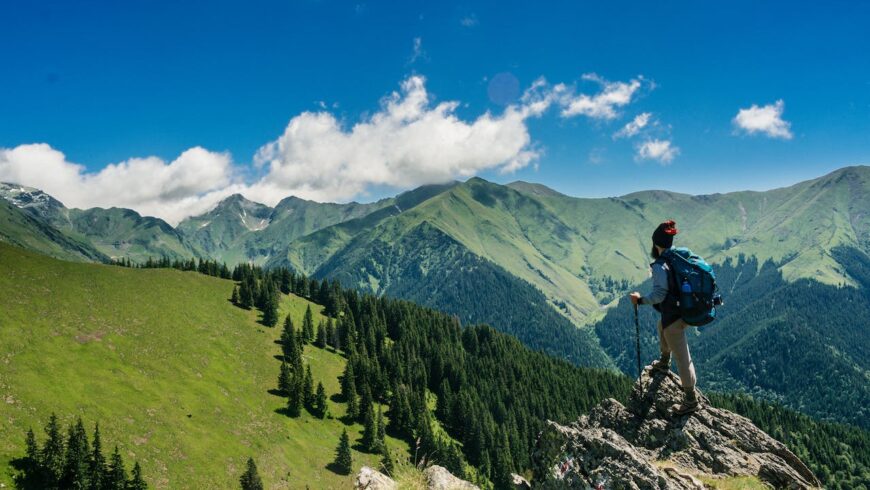Zero-waste hiking is a key aspect of eco-friendly travel, attracting those who cherish nature. This practice emphasizes leaving no trace in our natural environments, ensuring their preservation for coming generations. Our article aims to inform readers about the crucial Leave No Trace principles, offering guidance on reducing environmental footprints. We invite you to discover how adopting mindful hiking practices can significantly contribute to protecting the planet’s natural wonders.
What Is Zero-Waste Hiking?
Zero-waste hiking is an environmentally conscious approach to exploring nature, where the goal is to leave no trace of waste behind. This means everything a hiker brings into the wilderness, from food packaging to water bottles, should be left with them. The concept extends to using reusable or biodegradable materials wherever possible, avoiding single-use plastics, and ensuring all waste is packed out or properly disposed of in designated areas. This practice not only benefits the environment by reducing pollution and conserving natural resources, but it also enhances the hiking experience.

Understanding the Leave No Trace Principles
The Leave No Trace principles offer a framework for minimizing our impact on the environment while enjoying outdoor activities. These seven principles are:
- Plan Ahead and Prepare
- Travel and Camp on Durable Surfaces
- Dispose of Waste Properly
- Leave What You Find
- Minimize Campfire Impacts
- Respect Wildlife
- Be Considerate of Other Visitors
Planning ensures hikers are prepared for conditions and regulations while traveling and camping on durable surfaces to protect the terrain. Proper waste disposal is crucial for maintaining cleanliness, and leaving what you find preserves the natural and cultural heritage. Minimizing campfire impacts reduces the risk of wildfires and habitat destruction. Respecting wildlife ensures their well-being and natural behavior while being considerate of other visitors and maintaining a positive and respectful outdoor experience for everyone.
Plan Ahead and Prepare
Effective planning is essential for a successful and eco-friendly hiking trip. This involves researching the chosen trail, understanding the local wildlife and ecosystem, and being aware of the weather conditions. When planning, choose a hiking tour that emphasizes sustainability and educates participants on zero-waste practices. Preparing for a hike involves packing eco-friendly gear, bringing enough food and water in reusable containers, and knowing how to navigate the trail. This preparation reduces the likelihood of emergencies and ensures that hikers can manage their waste effectively, leaving no trace of their presence in the natural environment.
Travel and Camp on Durable Surfaces
Staying on marked trails and camping in designated areas are key to protecting fragile ecosystems. Off-trail hiking can lead to soil erosion, plant damage, and disturbance to wildlife habitats. When setting up camp, use existing sites to avoid further impact on the land. Stick to trails made of durable materials like rock, gravel, or dry grasses. Avoid camping or walking on sensitive surfaces such as wetlands, meadows, and desert crusts.

Dispose of Waste Properly
Managing waste efficiently is a cornerstone of zero-waste hiking. This includes carrying out all trash, composting organic waste properly, and using biodegradable soap for cleaning. In areas without facilities, it’s essential to bury human waste in a small hole at least 200 feet from water, trails, and campsites. Consider bringing a portable waste bag for areas where burying is not permissible. For common hiking waste like snack wrappers and used batteries, zero-waste alternatives include bringing bulk snacks in reusable containers and using solar-powered gadgets.
Leave What You Find
It is important to preserve the natural and historical artifacts found in wilderness areas. This principle encourages hikers to look but not take. Removing plants, rocks, and cultural artifacts disrupts the ecosystem and robs others of the chance to experience the same discovery. Similarly, altering natural features and structures, like building cairns or carving into trees, impacts the environment and can mislead other hikers. Respect for nature and history enhances the experience for everyone and maintains the integrity of outdoor spaces.
Minimize Campfire Impacts
While campfires are a traditional part of camping, they can cause lasting impacts on the environment. To minimize these effects, use established fire rings or bring a lightweight stove for cooking. Keep fires small and use only fallen wood. Never cut branches from live trees. In areas where fires are not permitted, respect these rules to avoid damaging the environment. As an alternative, bring portable solar chargers for electronic devices and enjoy the natural ambiance of the wilderness.

Respect Wildlife
Interactions with wildlife should be respectful and non-intrusive. Observe animals from a distance to avoid disturbing their natural behaviors. Feeding wildlife alters their diet and can lead to health problems or dependence on humans. Store food securely to prevent animals from accessing it. These practices are vital for the well-being of wildlife and the safety of hikers, ensuring a harmonious coexistence in nature.
Be Considerate of Other Visitors
Consideration for others enhances the outdoor experience for all. This includes yielding to other hikers on the trail, keeping noise levels low, and respecting the solitude of the wilderness. These practices create a welcoming and inclusive environment, encouraging everyone to enjoy the natural world responsibly and respectfully.
Zero-Waste Hiking Gear and Supplies
Investing in sustainable hiking gear and supplies is a responsible environmental choice. Opt for durable, eco-friendly equipment that can withstand multiple trips. DIY alternatives for common supplies, such as homemade trail snacks or natural insect repellents, can also reduce waste. Don’t forget that traveling is more than just a vacation; it’s an opportunity to positively impact the environment and inspire others to do the same. Choosing zero-waste options demonstrates a commitment to protecting our planet and enjoying its beauty responsibly.
Final Words
Zero-waste hiking is an essential practice for those who cherish our natural environments. When adopting the Leave No Trace principles and implementing sustainable habits, every hiker contributes to protecting and preserving our precious landscapes. It’s a simple yet powerful way to ensure that the beauty and integrity of nature endure for future explorers. Let’s all commit to this responsible approach and make every hike a step towards a healthier planet.
Cover image: Photo by James Wheeler

Author’s Bio: Michael Nittu is a moving expert at Heart Moving Manhattan, NYC. He is also a passionate outdoor writer and hiking enthusiast dedicated to promoting sustainable travel practices. With years of experience exploring diverse terrains, Michael shares expert insights and eco-friendly tips to help fellow nature lovers tread lightly on the earth.
